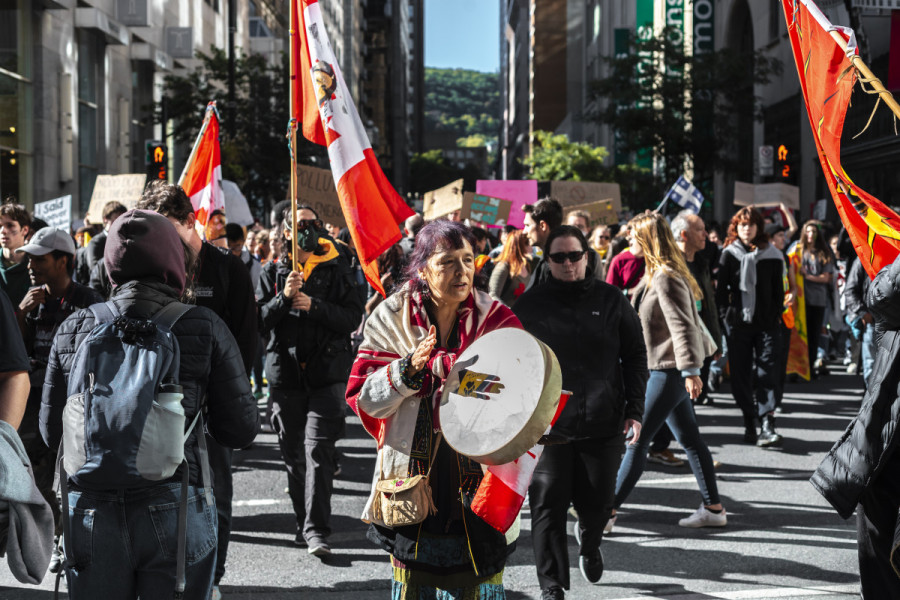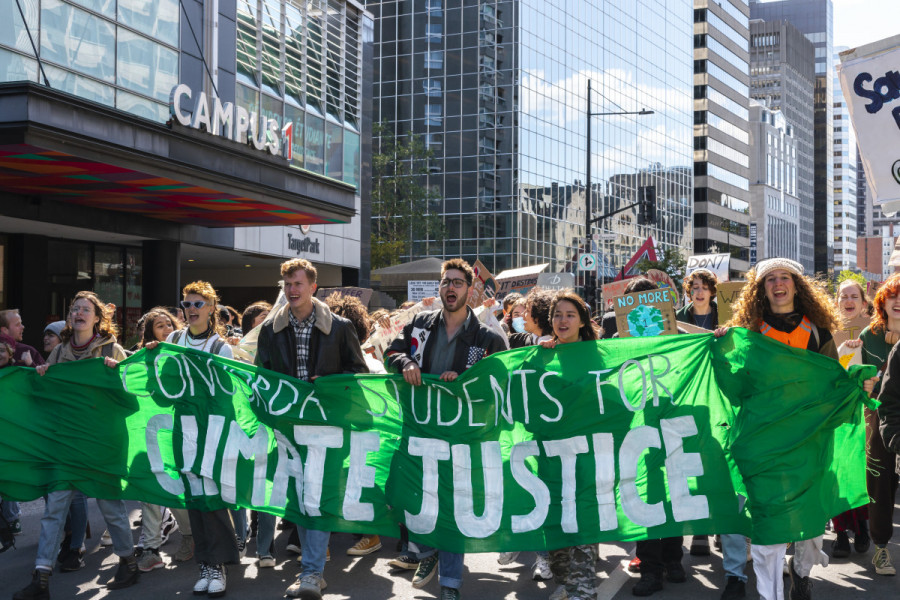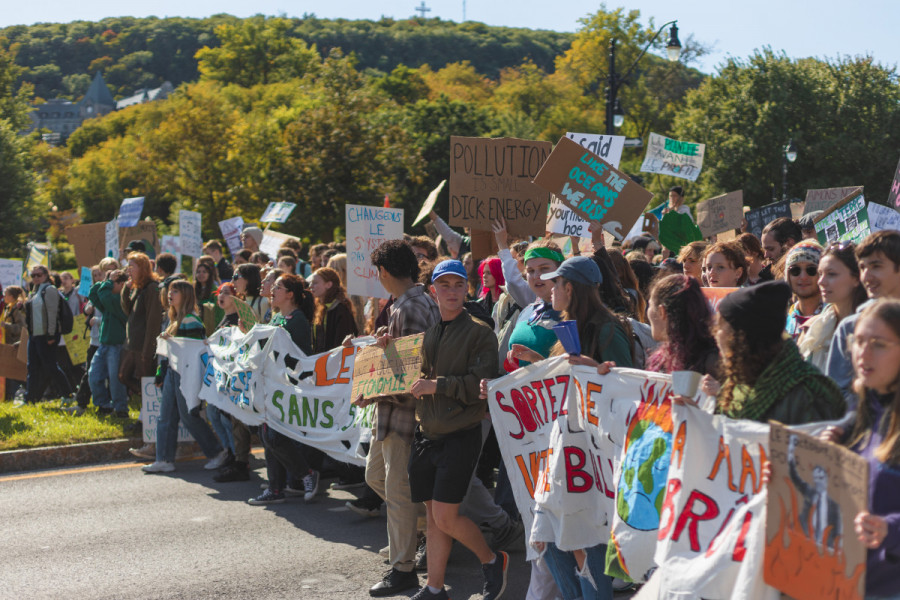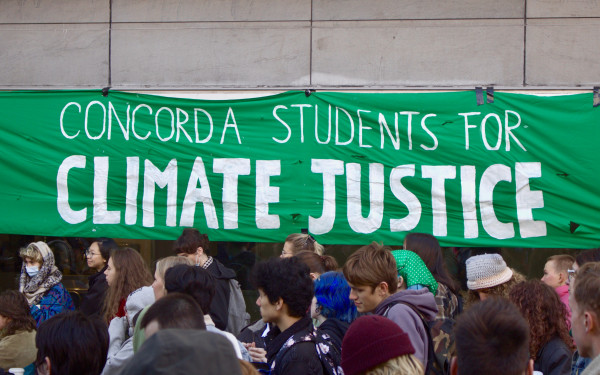Thousands of Climate Protesters Fight for Future Generations
Indigenous Speakers Invite Others to Pave the Way to Climate Justice
When National First Peoples Rights Committee Chief Normand Pilot and artist Shanipiap were invited to speak during the biggest climate protest of the year, they were hundreds of kilometers away from Montreal.
Despite the distance between the city and their Uashat Mak Mani-Utenam and Matimekush communities, respectively, accepting the offer was a no-brainer. They embarked on a thousand-kilometre-long trip to share their message with the protesters. The cacophony of people demanding a wealth tax and immediate, concrete climate action through their megaphones went silent to listen carefully.
On Sept. 23, thousands of students and workers gathered at the George-Étienne Cartier monument under the early afternoon sun. The Montreal climate strike, organized under the Fridays for Future movement, was one of many that occurred around the world. In Canada alone, over 150,000 people took to the streets.
_900_1350_90.jpg)
“It is our duty to take care of our Mother Earth. Our duty is to stop big corporations from eating Mother Earth,” Shanipiap said. She called Northern Quebec’s forests “Earth’s lungs” and explained that unless they are protected, the planet’s natural ecosystem could be disrupted.
Shanipiap expressed with urgency that their situation is “extremely difficult” and that it needs to be known. “My sister, for example, is asthmatic and can’t even open the windows of her home because of how much pollution there is outside.”
Back in Matimekush, destructive forestry, petrol and mining companies lay waste to the land and create environmental problems that directly impact the communities living nearby. Families are in danger of contracting diseases that worsen their quality of life.
“Canadian banks are stealing the land of all Indigenous communities for profit and plan to leave nothing to our descendants.” — Normand Pilot
“[The Canadian government] has tried to genocide us for years, but we’re still alive and fighting for our survival,” Shanipiap said. She is especially hopeful that her community’s children will continue to denounce the harmful systems of power that wreck their land.
Much like Shanipiap, Pilot encouraged future generations to continue the fight after them. Before coming up to the statue to speak, he and his wife offered tobacco to a nearby tree in prayer for a healthier climate.
“With all the destruction caused by multinational corporations, we might not have any trees left for our children, for our grandchildren,” Pilot said, while pointing to the children standing next to him. “Canadian banks are stealing the land of all Indigenous communities for profit and plan to leave nothing to our descendants.”

The efforts of people like Pilot and Shanipiap have not gone to waste either. Children as young as 13 years old were determined to skip school for the protest. They demanded climate justice so that they and others can live in a healthy world.
Elliot Paquin, a student at F.A.C.E Elementary and Secondary School chose to attend the protest despite the two-hour detention punishment it earned him.
“When I told my parents and teachers that I want the planet to last longer than it’s predicted to, they tell me that it doesn’t matter because I’d be dead by then,” he said. “It does matter, because there are other people who will be alive, and I want those people to have a life and be happy.”
Gabriel Marcotte, Paquin’s classmate, added that “I recently started to love living again, and I want a future for myself,” he said. “But if the planet is just going to burn soon, why am I going to school? […] I want to show people that there are children who want a future, who want to live.”
After the speakers finished, the protesters made their way down to Place Canada where more speeches took place, followed by resounding chants.

This article originally appeared in Volume 43, Issue 3, published September 27, 2022.


_600_832_s.png)

-7_600_375_90_s_c1.jpg)


